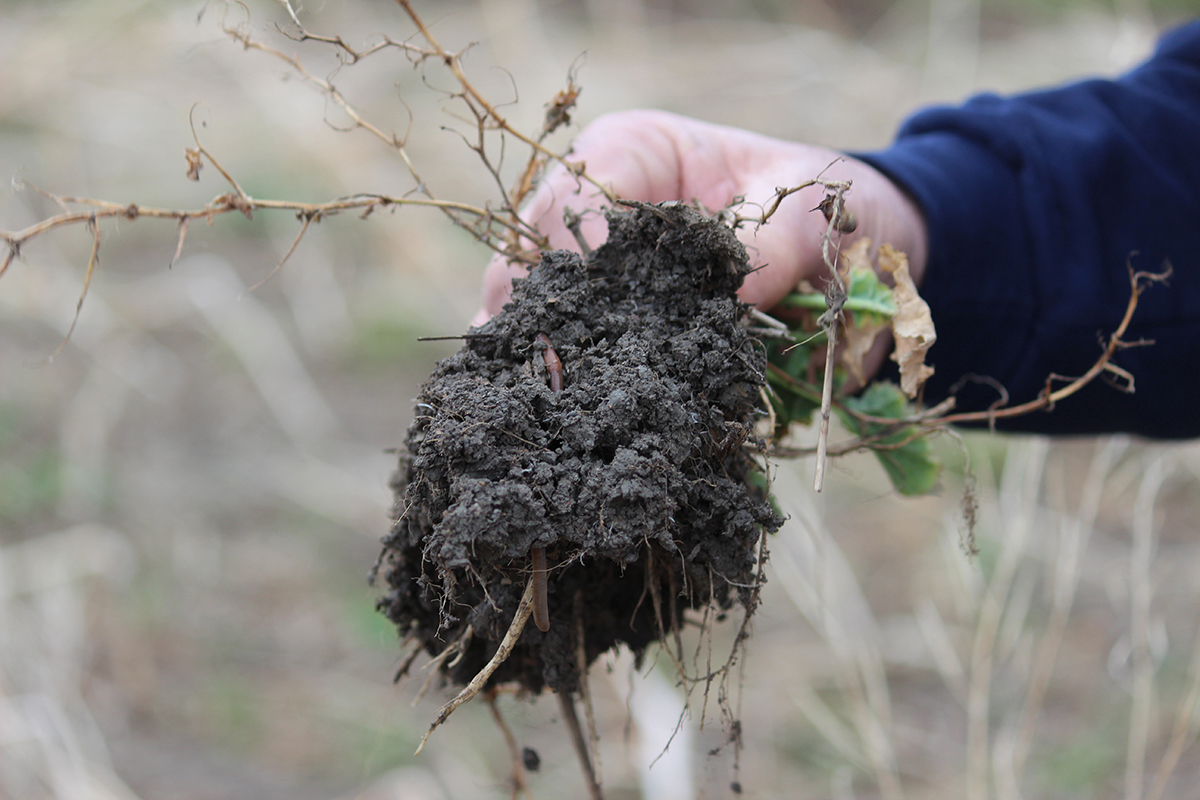
PEMBERVILLE, Ohio — When Ron Snyder makes management decisions for his Wood County farm, he’s thinking about more than the crops he’ll harvest. He’s also trying to promote the biological activity within the soil.
“You’ve got to feed the soil,” he said.
Snyder farms about 200 acres near Pemberville with his wife, Barb. His ground is located in what was once Ohio’s Great Black Swamp, and the soils are heavy clays.
He knew he needed better drainage and the conventional solution would be to install subsurface tile, but he put off that investment.
“I couldn’t get water to go through the soil,” Snyder said.
New tile wouldn’t help much if the water couldn’t reach it, he explained. “I decided I would not tile it until I could see the water go through the soil.”
After a change in his production practices, he began to see better infiltration. Finally, when he did have tile installed five years ago, the drainage contractor was impressed with the soil structure, Snyder said. “He told me, ‘I don’t know what you’re doing, but don’t quit.'”
Soil building

About 11 years ago, Snyder switched to no-till and began planting cover crops with the goal of improving his soil organic matter and promoting biological activity in the soil.
He now typically follows a three-year rotation raising corn, soybeans and wheat. Corn is followed by a fall-planted cover crop, and then he plants soybeans the next spring. After soybean harvest he plants wheat, and then after wheat, he puts in another cover crop before rotating to corn the following spring.
Snyder started out with soil organic matter of about 2%, but since he switched to no-till and added cover crops, he’s seen an increase to around 4.4% across the farm. The cover crops also help reduce weed pressure by providing competition, he added. One of the most important improvements has been an increase in populations of arbuscular mycorrhiza, fungi that form symbiotic relationships with plants and improve the plants’ access to nutrients, Snyder said.
He’s progressed from using cereal rye covers to multiple cover crop mixes.
“The more different plants I can put in there the more mycorrhiza I’m feeding,” he said.
Usually, Snyder includes flax and buckwheat in his cover crop mixes and also adds other species, depending on conditions in the field. For instance, he uses winter peas fix to nitrogen in the soil. Sunflowers are good for scavenging zinc, radishes send down a long taproot that can help alleviate compaction, and sorghum-sudangrass helps build biomass.
Those crops are all winter-killed, so they don’t require control in the spring, he added. Timing is also a consideration in the selection of species, Snyder said. Following corn last year, he planted a cereal rye cover crop because the wet fall didn’t leave time to get much else established. He’s been working on figuring out mixes that will work with later planting after corn.
Improving biological activity

As he’s changed his management practices, Snyder has also changed his approach to soil testing. Soil nutrient testing may be correct in what it is testing, but it doesn’t tell you about the biological activity in the soil.
“Nobody talks about the biology,” he said.
Soil nutrient tests done in 2011 showed Snyder’s phosphorus and potassium levels were within the maintenance range. He hasn’t applied those nutrients since, but potassium levels have remained about the same and phosphorus levels have gone up, even though nutrients are leaving the fields with crop removal, he said. “I’m not putting it on, so where’s it coming from?”
Farmers need to start taking a closer look at how biological activity in their soils affects the nutrients available to their crops, Snyder said. He’s using a variety of soil tests that focus on the life within the soil to track changes in his fields. A soil PLFA (phospholipid fatty acids) test analyzes the microbial community present when the sample is taken. A CO2-Burst test measures the release of CO2 from a dry soil sample after it is moistened, giving a glimpse at aerobic microbial activity. The Haney test focuses on soil health indicators such as the soil nutrients accessible to microbes in the soil.
On-farm experiments
To figure out what works best on his farm, Snyder works with Ohio State University researchers on field trials and also conducts studies on his own. He has a garden plot where he tests out ideas before trying them out on his 2.5-acre “tester field.”
That gives him a chance to evaluate his ideas before applying them across the entire farm. Keeping an open mind and trying new ideas is the only way to move farm management up to the next level, Snyder said.
Some of his ideas don’t work out, but they help him learn.
“I have failures all the time, but I try to figure it out,” he said.










